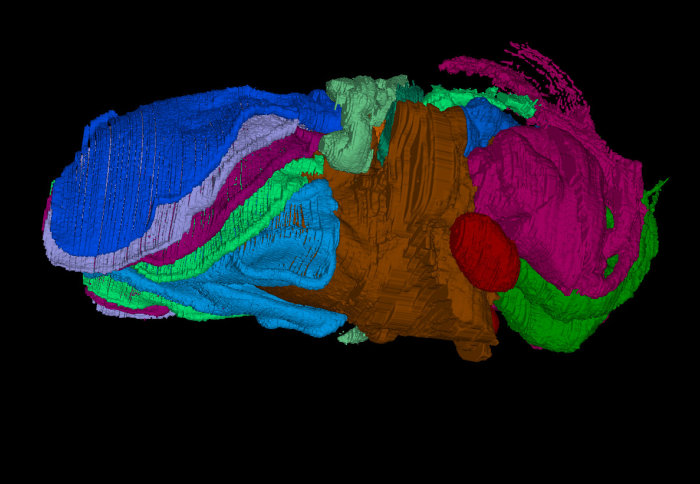Tiny crustacean had a heart more than 400 million years ago

An Imperial researcher is part of an international team that has discovered a rare and exceptionally well-preserved crustacean.
The fossil is a new species of ostracod, a relative of crabs and shrimps, and is just a few millimetres long.
Exceptional preservation
This particular fossil preserves not just the animal’s hard shell, but also its limbs, eyes, gut and gills – soft parts that are extremely rarely preserved.
Every time we find a new animal from these rocks, we learn something new, and usually something unexpected. Dr Mark Sutton Senior Lecturer in the Department of Earth Science & Engineering
The five pairs of gills, with canals that would have conveyed essential fluids, suggest the creature had a heart. This means hearts had likely evolved in representatives of this common group of micro-crustaceans by at least 430 million years ago.
The specimen has been given the name Spiricopia aurita, from the Latin words for ‘breath of life’, ‘abundance’ and ‘ears’.
Rare occurrence
Dr Mark Sutton, Senior Lecturer in the Department of Earth Science and Engineering, is part of the team to discover the fossil in 430 million-years-old rocks in Herefordshire, UK. He said: "This locality has produced a spectacular series of three-dimensional soft-bodied fossils, which have provided critical information on the evolution of all sorts of invertebrate groups, not least ostracods.
It can’t be stressed too highly that finding the soft tissues of these organisms is a vanishingly rare occurrence. Every time we find a new animal from these rocks, we learn something new, and usually something unexpected."
S. aurita lived in a sea that covered much of southern Britain and beyond during the Silurian period (about 443-420 million years ago). An influx of volcanic ash entombed the animals living there, preserving them intact within hard nodules.
Digital reconstruction
The fossil was recovered from its host rock using a digital reconstruction technique that involves grinding down and scanning the actual fossil and rock, layer by wafer-thin layer, and then producing a virtual fossil.
Professor David Siveter, from the University of Leicester’s School of Geography, Geology and the Environment, said: “This is an exciting and rare find, in which the soft parts of the animal are preserved as well as its shell. In almost all cases such fleshy structures are denied to the fossil record. It gives us a tantalising window into the palaeobiology of the animal and here yields knowledge about important organ systems and associated metabolic activities in what is a widespread group of fossil and living arthropods.”
The research was funded by the Natural Environment Research Council, the Leverhulme Trust, Oxford University Museum of the Natural History and Yale Peabody Museum of Natural History.
‘A well-preserved respiratory system in a Silurian ostracod’ by D. Siveter et al. is published in Biology Letters.
Supporters

Article text (excluding photos or graphics) © Imperial College London.
Photos and graphics subject to third party copyright used with permission or © Imperial College London.